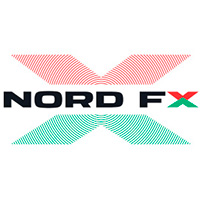Economists tend to look at the NASDAQ when referring to the technology industry and related stocks. Over the past 15 months the technology industry and stocks have outperformed most other markets with the likes of Amazon, Apple and Tesla performing exceptionally well. Over a 12-month period the NASDAQ had increased by almost 43. However, over the past 4 weeks the stock has declined by 5.10%, marking the biggest decline since April 2021.
So why is the technology market declining?
Firstly, it is important to note that the technology market is not the only market which has taken a hit. The Dow Jones and the SNP500 to a lesser extent have also shown bearish trends and general price movements over the past 4 weeks. The US stock market came under pressure due to the higher bond yields and more hawkish Federal Reserve.
Quantitative Easing influencing the stock market
The Federal Reserve has lately taken a more hawkish stance. The Fed has advised the Quantitative Easing Program is likely going to be reduced in the coming months even if inflation levels decline without monetary policy alterations. However, according to the Chairman of the Fed, the broken supply chains and high energy prices are likely to continue into 2022, putting further pressure on inflation. Interest rates are less likely to rise as early. However, a lower QE program or no program at all may also increase the cost of borrowing.
When the cost of borrowing increases, it is generally known to cause a lower level of demand as well as risk appetite. Individuals in the lower and lower-middle class are more likely to opt for savings accounts and holding off purchases, whether it is an investment product, buy to Let, Second Home or Residential. The lower Purchase Facility set by the Federal Reserve will also decrease the money supply within the economy and financial trading market.
Bond Yields
The increasing yields in the bond market is also putting strain on the stock market. Stocks and bonds are known to be inversely correlated. However, it is important to note that there can be times when both markets increase simultaneously. This may happen due to the increased capital supply in the market or a mixed sentiment between traders. Currently the inverse correlation can be seen as bond yields increase, market participants consider the safer option now the returns are higher.
Technology Market - Tesla
In the first half of this year, the company showed a record volume of deliveries of 386K electric cars, and in the second half of the year, this figure is projected at 364K units. This will allow the issuer to fulfil the annual plan of 750K electric cars and show one of the best financial results for the entire period of work on the automotive market. Next year, after the Texas and Berlin factory launch, shipments may increase to 1.3M units according to economists. Wall Street analysts are optimistic about the third quarter results which are due on the 20th of October 2021.
RBC Capital Markets experts estimate supplies at 233.5K units, which is 67% more compared to the same period last year. Investment bank Piper Sandler Co raised its supply estimate to 233k based on sustainability results.
Here we can see a good example of how Tesla is outperforming other technology-based stocks and in general the NASDDAQ. The price over the past 5 trading days has increased by 3.45% and by 6.20% in the past month. However, the market is pondering on whether the bearish market will bring the bullish trend to an early end.
Technology Market – Apple
Unlike Tesla, Apple has been struggling since reaching a price high on the 7th of September. The price had reached a high of $156.69 before declining by 8.75% to today’s price. Apple is one of the companies with positive fundamentals but a declining price, hence the importance of analysing not only the stock itself but the overall market conditions (NASDAQ).
According to Wedbush, the global demand for the new iPhone 13 was 20% higher than last year's iPhone 12. More than 5 million pre-orders have already been placed in China for the new line, according to SCMP research. Credit Suisse has affirmed its neutral rating on Apple with a target price of $150 per share ($8 higher than the current price).
On the 18th October our educational webinar will be looking at the stock market and the coming Earning Season.
We can see how the NASDAQ and the Technology Market has been influenced by different economic elements. Some stocks have shown clear strength during the NASDAQ while others have struggled even with equally positive sales news.
 Trump has declared that the United States could become the global capital of the crypto industry. To achieve this, he proposes reducing regulatory pressures.
Trump has declared that the United States could become the global capital of the crypto industry. To achieve this, he proposes reducing regulatory pressures. Forex trading is a captivating endeavor, promising both active and passive income streams. Yet, mastering forex is a continuous journey that transcends expertise levels, be it a novice or a seasoned trader...
Forex trading is a captivating endeavor, promising both active and passive income streams. Yet, mastering forex is a continuous journey that transcends expertise levels, be it a novice or a seasoned trader... In a resounding victory, NordFX, a prominent brokerage firm, has been crowned the "Best News & Analysis Provider" of 2023...
In a resounding victory, NordFX, a prominent brokerage firm, has been crowned the "Best News & Analysis Provider" of 2023... Errante, the premier online broker, is dedicated to delivering top-tier services and forging long-lasting, trust-based relationships with our clients. Our mission is to enhance your online trading journey...
Errante, the premier online broker, is dedicated to delivering top-tier services and forging long-lasting, trust-based relationships with our clients. Our mission is to enhance your online trading journey... Gold, a precious metal revered for its value for centuries, has found its place in the world of trading. Trading gold has become a popular way to invest in the commodity market...
Gold, a precious metal revered for its value for centuries, has found its place in the world of trading. Trading gold has become a popular way to invest in the commodity market...